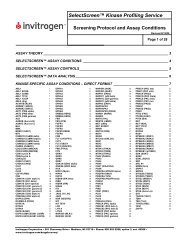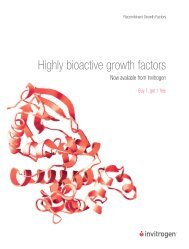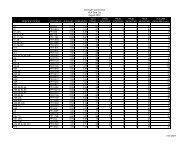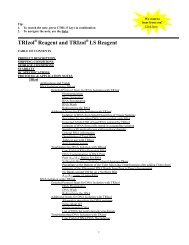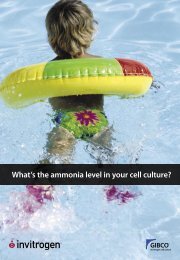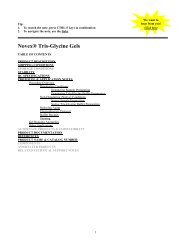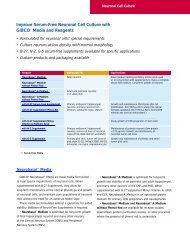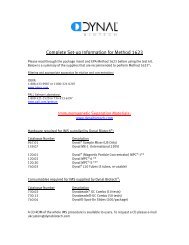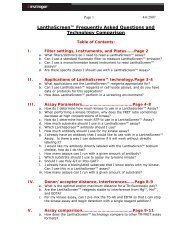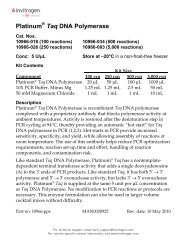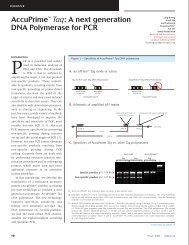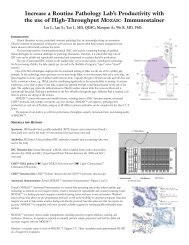DB3.1 Competent Cells - Invitrogen
DB3.1 Competent Cells - Invitrogen
DB3.1 Competent Cells - Invitrogen
You also want an ePaper? Increase the reach of your titles
YUMPU automatically turns print PDFs into web optimized ePapers that Google loves.
LIBRARY EFFICIENCY ® DB3.1 <strong>Competent</strong> <strong>Cells</strong><br />
Cat. No. 11782-018 Size: 1 ml<br />
Store at -70°C.<br />
Do not store in liquid nitrogen.<br />
Information for European Customers:<br />
These cells are genetically modified and contain plasmid-derived DNA<br />
sequences. As a condition of sale, this product must only be used in<br />
accordance with all applicable local legislation and guidelines including EC<br />
Directive 90/219/EEC on the contained use of genetically modified<br />
organisms.<br />
Description:<br />
LIBRARY EFFICIENCY DB3.1 <strong>Competent</strong> <strong>Cells</strong> have been prepared by a<br />
patented modification of the procedure of Hanahan (1). These cells contain<br />
the gyrA462 allele which renders the strain resistant to the toxic effects of the<br />
ccdB gene (2). LIBRARY EFFICIENCY DB3.1 <strong>Competent</strong> <strong>Cells</strong> can be used for<br />
propagating plasmids containing the ccdB gene such as GATEWAY System<br />
vectors or for constructing new plasmids containing the ccdB gene.<br />
Component Part No. Amount per Vial<br />
DB3.1 <strong>Competent</strong> <strong>Cells</strong> 52872 200 µl<br />
pUC 19 DNA (0.01 µg/ml) 95340 100 µl<br />
Quality Control:<br />
LIBRARY EFFICIENCY DB3.1 <strong>Competent</strong> <strong>Cells</strong> yield > 1 × 10 8<br />
transformations/µg monomer pUC19 with non-saturating amounts (50 pg) of<br />
DNA. Saturating amounts of control pUC19 (25 ng) generate > 5 × 10 5<br />
ampicillin-resistant colonies in a 100-µl reaction. LIBRARY EFFICIENCY DB3.1<br />
<strong>Competent</strong> <strong>Cells</strong> are also tested for resistance to the toxic effects of the ccdB<br />
gene (2).<br />
Doc. Rev.: 07/02/01
Page 2 of 4<br />
Transformation Procedure:<br />
A stock pUC19 solution (0.01 µg/ml) is provided as a control to determine the<br />
transformation efficiency. To obtain maximum transformation efficiency, the<br />
experimental DNA must be free of phenol, ethanol, protein and detergents.<br />
1. Thaw competent cells on ice. Place required number of 17 × 100 mm<br />
polypropylene tubes (Falcon ® 2059; see Note 1) on wet ice.<br />
2. Gently mix cells, then aliquot 100 µl competent cells into chilled<br />
polypropylene tubes.<br />
3. Refreeze any unused cells in the dry ice/ethanol bath for 5 minutes<br />
before returning them to the -70°C freezer. Do not use liquid nitrogen.<br />
4. To determine transformation efficiency, add 5 µl (50 pg) control DNA to<br />
one tube containing 100 µl competent cells. Move the pipette through<br />
the cells while dispensing. Gently tap tube to mix.<br />
5. For DNA from ligation reactions, dilute the reactions 5-fold in 10 mM<br />
Tris-HCl (pH 7.5) and 1 mM EDTA. Add 1 µl of the dilution to the<br />
cells (1-10 ng DNA), moving the pipette through the cells while<br />
dispensing. Gently tap tubes to mix.<br />
6. Incubate cells on ice for 30 minutes.<br />
7. Heat-shock cells 45 seconds in a 42°C water bath; do not shake.<br />
8. Place on ice for 2 minutes.<br />
9. Add 0.9 ml of room temperature S.O.C. Medium (Cat. No. 15544-034).<br />
10. Shake at 225 rpm (37°C) for 1 hour.<br />
11. Dilute the reaction containing the control plasmid DNA 1:10 with<br />
S.O.C. Medium. Spread 100 µl of this dilution on LB or YT plates with<br />
100 µg/ml ampicillin.<br />
12. Dilute experimental reactions as necessary and spread 100-200 µl of this<br />
dilution as described in Step 11.<br />
13. Incubate overnight at 37°C.<br />
Cat. No. 11782-018
Page 3 of 4<br />
Notes:<br />
1. Falcon 2059 tubes or other similarly shaped 17 × 100 mm polypropylene<br />
tubes are required for optimal transformation efficiency.<br />
Microcentrifuge tubes (1.5 ml) can be used but the transformation<br />
efficiency will be reduced 3- to 10-fold.<br />
2. LIBRARY EFFICIENCY DB3.1 <strong>Competent</strong> <strong>Cells</strong> are refreezable.<br />
3.<br />
Subsequent freeze-thaw cycles will reduce transformation efficiency<br />
approximately 2-fold.<br />
Media other than S.O.C. can be used but the transformation efficiency<br />
will be reduced. Expression in Luria Broth reduces transformation<br />
efficiency a minimum of 2- to 3-fold.<br />
4. Transformation efficiency (CFU/µg):<br />
CFU in control plate × 1 × 10 6 pg × dilution factor(s)<br />
pg pUC19 used in transformation µg<br />
For example, if 50 pg pUC19 yields 100 colonies when 100 µl of a 1:10<br />
dilution is plated, then:<br />
CFU/µg = 100 CFU × 1 × 10 6 pg × 1 ml × 10 = 2 × 10 8<br />
50 pg µg 0.1 ml plated<br />
References:<br />
1. Hanahan, D. (1983) J. Mol. Biol. 166, 557.<br />
2. Bernard, P., and Couturier, M. (1992) J. Mol. Biol. 226, 735.<br />
Falcon ® is a registered trademark of Becton Dickinson.<br />
This product is covered by U.S. patent 4,981,797 and foreign equivalents.<br />
Cat. No. 11782-018
Page 4 of 4<br />
Limited Label License No. 19:<br />
Use of this product is subject to the Cloning Technology Limited Label<br />
License (Limited Label License 19). Please refer to the catalogue, the<br />
Cloning Technology manual for your product, or web site at<br />
www.invitrogen.com/gateway, under Services and Licenses for details. These<br />
products are the subject of U.S. Patent Nos. 5,888,732, 6,143,557, 6,171,861,<br />
5,766,891, 5,487,993, 5,827,657, 5,910,438, 6,180,407, and 5,851,808.<br />
Cat. No. 11782-018



